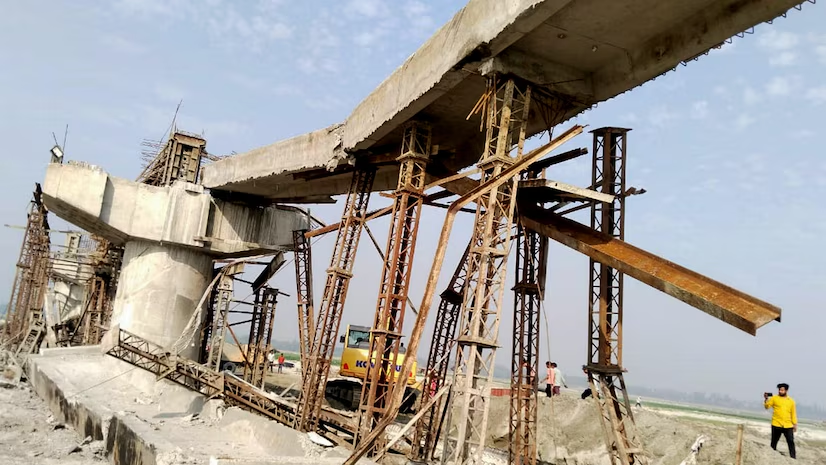Bihar has been plagued by a series of bridge collapses, with the latest incident occurring on Wednesday, marking the 13th such incident in the past three weeks. The bridge, located in Mahishi village in Saharsa district, collapsed earlier in the day, leaving no reports of injuries or fatalities. This latest collapse has raised serious concerns about the state’s infrastructure and the government’s ability to address these issues.
The Recent Spate of Bridge Collapses
The series of bridge collapses in Bihar has been unprecedented, with incidents reported from various districts across the state. The districts affected include Siwan, Saran, Madhubani, Araria, East Champaran, and Kishanganj. The Bihar government has taken swift action by suspending at least 15 engineers in connection with these incidents.
Government Response and Initiatives
In response to the series of collapses, Chief Minister Nitish Kumar directed officials to conduct a survey of all old bridges in the state and identify those in urgent need of repair. This initiative aims to address the structural issues that have led to these repeated failures. The government’s swift action in suspending engineers and conducting surveys indicates a commitment to improving the state’s infrastructure and ensuring public safety.
Political Criticism and Public Concern
The recent spate of bridge collapses has led to significant criticism from political leaders and the public. RJD leader Tejashwi Yadav has been vocal about the state’s poor law and order situation, inflation, crime, corruption, poverty, and unemployment. He has criticized the state government for its inability to address these issues, stating that the government is more focused on corruption than on the welfare of the people.
The Impact on Public Safety
The repeated bridge collapses have raised serious concerns about public safety in Bihar. The state’s infrastructure, particularly its bridges, has been under scrutiny for some time. The recent incidents highlight the need for immediate attention and repair to prevent further accidents. The suspension of engineers and the government’s survey initiative are steps in the right direction, but more needs to be done to ensure the safety of the public.
The Economic and Social Impact
The economic and social impact of these bridge collapses cannot be overstated. The disruption to transportation and commerce caused by these incidents affected the daily lives of citizens and the overall economy of the state. The social impact is also significant, as these incidents can lead to fear and anxiety among the public, particularly in areas where bridges are a crucial part of daily life.
Conclusion
The recent bridge collapse in Bihar is a stark reminder of the urgent need for infrastructure improvement and maintenance. The state government’s swift action in suspending engineers and conducting surveys is a positive step, but more needs to be done to address the root causes of this repeated failure. The public and political leaders must continue to hold the government accountable for ensuring the safety and well-being of the people of Bihar.
Key Points:
- 13th Bridge Collapse in Three Weeks: The latest bridge collapse in Bihar marks the 13th such incident in the past three weeks.
- No Injuries or Fatalities Reported: There have been no reporters of injuries or fatalities in the latest incident.
- Government Action: The Bihar government has suspended at least 15 engineers and instructed officials to survey all old bridges in the state.
- Political Criticism: RJD leader Tjeashwi Yadav has criticized the state government for its poor law and order situation and lack of focus on public welfare.
- Public Safety Concerns: The repeated bridge collapses have raised serious concerns about public safety in Bihar.
Recommendations:
- Immediate Repair and Maintenance: The state government should prioritize the repair and maintenance of all bridges in Bihar to prevent further accidents.
- Enhanced Safety Measures: The government should implement enhanced safety measures to ensure the structural integrity of bridges.
- Public Awareness Campaigns: The government should launch a public awareness campaign to educate citizens about the importance of maintaining infrastructure and the steps being taken to address these issues.
- Independent Audits: The government should consider conducting independent audits of brides to identify and address potential risks.
By addressing these issues, Bihar can work towards ensuring the safety and well-being of its citizens and maintaining its infrastructure to support economic growth and social development.
